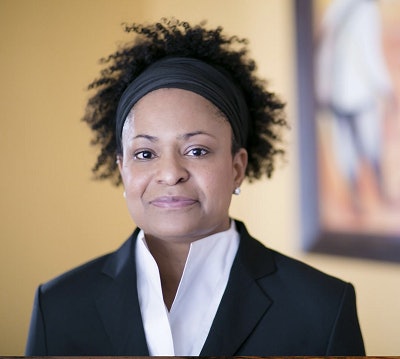I began in the field of diversity and inclusion when it was yet to be identified as a research/scholarly field of inquiry, and I have had the great fortune to work in higher education for the bulk of my professional career, with some brief forays into the corporate and nonprofit worlds. Through my work at Tufts University, Harvard University and now at NYU, I have been able to grow and innovate as the Diversity and Inclusion (DI) field has emerged and developed. I often define myself and my work as a startup; and, one of the many wonderful things about higher education is the encouragement of the new, the innovative and support for entrepreneurial endeavors. Through my work over the last two decades, I continue to embrace these tenets, and as result have learned to innovate and transform my work in the field.
Recently, I gave the Keynote Address at the Her Future Global Summit with some of the most influential leaders from across the globe. One of the major questions addressed was, “How do we understand digital inclusion across generations and leverage multigenerational inputs in the COVID-19 era?” After working, advising, and consulting on issues of accessibility, technology and innovation across university, corporate and non-profits setting, I am increasingly convinced that transgenerational engagement in the workforce is one of the key components needed at this historical moment to solve many of the issues that we are confronting today; whether it be COVID-19, or other disruptors, we need diverse multigenerational expertise to proactively prepare ourselves for our interconnected digital futures.
 Dr. Lisa Coleman
Dr. Lisa ColemanDigital generational literacy engages universal design to promote digital engagement, communication, work, and innovation across generations, and to engage what NYU Professor Dolly Chugh describes as a growth model where one is able to leverage generational differences for digital “diversity bonuses.” The bonuses are derived from trans-generational and intersectional inputs and learnings. We begin with determining organizational or individual literacy and this is achieved through a process of digital mapping. Digital Mapping involves diagramming (think here of how in the “old days” some of us used a format to deconstruct sentence formation) one’s digital abilities – in other words, mapping out what one knows (individually or organizationally) in terms of the digital frontier. This examination of digital inclusive practices would include identifying digital assessment tools, assets, digital gaps, digital assets, and areas for advanced digital collaborations. The varying abilities across generations to access technology is part and parcel of the digital divide. To address these types of divides, learning modules and case studies that engage design thinking protocols and innovative methods and tools can be leveraged for trans-generational skill and knowledge acquisition to maximize trans-generational collaborations. Modules that are relevant and resonant among the emerging Alpha generation, as well as intermediary and more seasoned generations can both facilitate literacy and learning across sectors, while enabling trans-generational development and application. Lastly, as we think about AI and robotics, the creation of new scientific knowledge related to health, pandemics and other areas, the future of work, and all forms of tech — issues of accessibility remain paramount. As many know, universal design is key to accessibility, maximum access and efficiencies and as we know from HR literature, productivity and access are linked to efficiency. Developing new literacy tools for multifaceted groups and employing universal design protocols undergirds multigenerational accessibility.
To illustrate why design is important, let us take a step back in time and recall the moments when Apple first started – it was a technology that was developed for graphic designers – the windows were intended to be more user friendly for those who needed to work in multiple packages. DOS was clumsier and more labor intensive, but if one was working in the financial industry one needed not only the dependability of the PC that worked with all types of databases, but also the physical sturdiness of IBM/Lenovo. Accessibility means different strokes for different folks. In other words in this instance, technology, and our familiarity with technologies, is on a continuum and some of us have low and some high-level, or broader spectra of fluency. Some are very familiar with graphics, and some are not, so different technologies can be intentionally designed, leveraged, curated, and integrated together for maximum access. If we are to solve the big problems, concerns, and issues such as COVID-19, collaboration is essential. This pandemic has brought global communities together in new ways and with all of the disruptions we will continue to face, climate, etc. we will have to work together to address them.
Literacy, design, collaboration, and intersectionality are key strategy elements needed to address central questions such as: how are we using digital technology to innovate access and inclusion across identities and geographies? How can technology facilitate the identification and mitigation of ongoing divides and gaps, i.e. digital, economic, health, and access? How do we address concerns about the future of work and ensure that we are leveraging the wealth of talent across current divisions while advancing multigenerational collaborations from Alphas to Marturists?
Emerging programs focused on a) Reciprocal Cross Generational Digital Learnings, b) Lifelong Learning & Post-60 Work Opportunities, c) Holistic Market Engagement, d) Universal Literacy Design, and e) Digital Innovation Collaborations will help us manage pandemics, and other disruptions yet to come.
At NYU, we strive to close digital divides through design, collaboration, innovation and transgenerational engagement. We are constantly asking, are we ready? As such, we are able to innovate across generations, faculty and students, administrators and alumni; and as we continue our work there are so many more collaborations and possibilities. We have learned to engage universal design and global diversity with an emphasis on accessibility, collaboration, and intersectionality which can change the trajectory of your life, your business, and your university. We have also learned that we can innovate to offer free tuition at our medical school; create a first of its kind in the world disability center at the Dental School; initiate an Aging incubator to engage retired populations; establish an AI Now Institute to experiment with new platforms; fortify our NEST program focused on neurodiversity to engage learners across all ability spectrums; and, strengthen our Innovation Labs and work with women and people of color innovators, entrepreneurs and founders across all generations; and this is just the beginning. There is much to do. Through work with multifaceted generations, an emphasis on increased collaboration and literacy, innovating and designing for those most vulnerable, and developing new initiatives like the aforementioned, we can continue to engage the past, the present, and the future to grow and leverage the bonuses of our globally diverse transgenerational populations.
Dr. Lisa Coleman is the senior vice president for global inclusion and strategic innovation at New York University and author of the forthcoming book “The Global Collaborative, Generational, Digital Design Revolution: Are You Ready?”


















